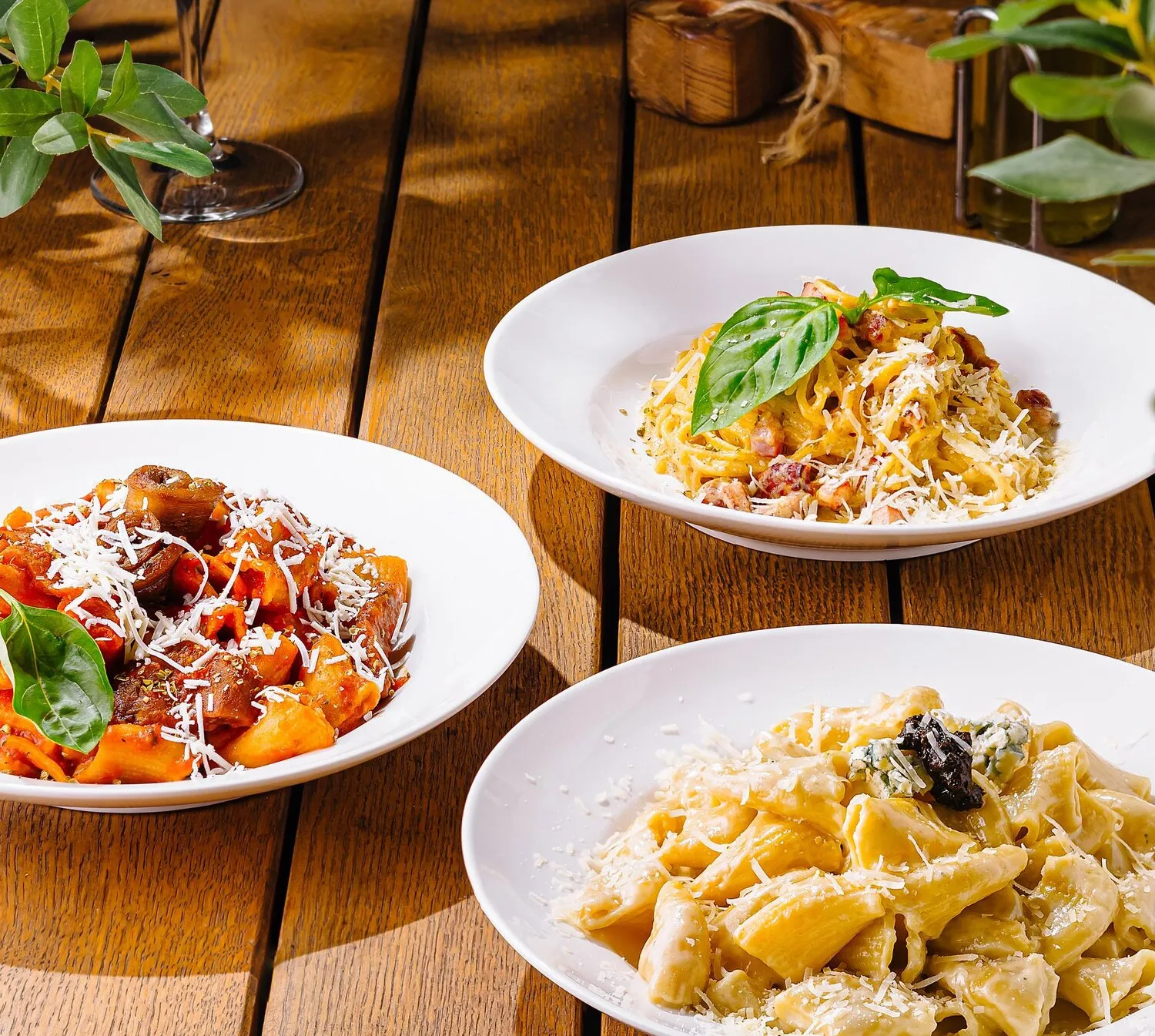
Pasta dishes
Various pasta dishes are available.
Nutrition Facts
* The % Daily Value (DV) tells you how much a nutrient in a serving of food contributes to a daily diet. 2,000 calories a day is used for general nutrition advice.
Pasta's history stretches back millennia, with evidence suggesting early forms existed in ancient civilizations. However, the pasta we know today largely evolved in Italy, particularly in Sicily and mainland Italy, during the medieval period. Innovations in durum wheat cultivation and drying techniques allowed for the widespread production and preservation of pasta, cementing its place in Italian cuisine. Arab influence in Sicily played a role in the early development of dried pasta.
Pasta is more than just food in Italy; it's a cultural cornerstone, representing family, tradition, and regional identity. Different regions boast their own unique pasta shapes and sauces, reflecting local ingredients and culinary customs. Pasta is often enjoyed as a first course (primo piatto) in a multi-course meal, and its preparation and consumption are often social events.
Family Meals
Pasta is a central part of family meals, often prepared with love and care by the matriarch. Sharing a plate of pasta is a bonding experience that strengthens family ties.
Regional Variations
Each region in Italy has its own distinct pasta traditions. For example, Emilia-Romagna is known for its fresh egg pasta like tagliatelle and tortellini, while Campania is famous for its dried pasta like spaghetti and penne.
Sunday Sauce
In many Italian-American families, 'Sunday Sauce' (also known as 'gravy') is a tradition involving a slow-cooked tomato sauce with various meats, served over pasta. It's a symbol of family unity and a time for gathering.
Pasta dishes offer a vast spectrum of flavors, ranging from simple and fresh to rich and complex. The key lies in the sauce, which can be tomato-based, cream-based, oil-based, or pesto-based, each offering a distinct flavor profile. Herbs, cheeses, meats, seafood, and vegetables all contribute to the incredible diversity of pasta flavors.
Tomato-based sauces provide a tangy and acidic base, often enhanced with garlic, onions, and herbs like basil and oregano. Cream-based sauces offer richness and indulgence, frequently incorporating cheeses like Parmesan, Romano, or Gorgonzola. Oil-based sauces, typically using olive oil, emphasize fresh ingredients and aromatic herbs like garlic, chili flakes, and parsley. Pesto, made from basil, pine nuts, garlic, Parmesan cheese, and olive oil, delivers a vibrant and herbaceous flavor. The specific ingredients in a pasta sauce can dramatically alter its flavor profile, making for endless possibilities.
Cook Pasta Al Dente
Cook pasta 'al dente,' which means 'to the tooth.' It should be firm and slightly resistant when bitten, not mushy. This ensures a better texture and flavor.
Save Pasta Water
Before draining the pasta, reserve about a cup of the starchy cooking water. This water can be added to the sauce to help it cling to the pasta and create a creamy emulsion.
Sauce and Pasta Harmony
The type of pasta should complement the sauce. Thicker sauces pair well with larger pasta shapes, while lighter sauces work better with thinner pasta shapes.
Salt the Pasta Water Generously
Salting the pasta water not only seasons the pasta itself, but also helps it cook more evenly. Use a generous amount of salt – about a tablespoon per gallon of water.
Explore additional Italian dishes and restaurants
Explore ItalianDiscover top dining spots and culinary experiences in Winterthur.
Explore WinterthurLearn more about the food culture, restaurant scene, and culinary heritage of Switzerland.
Explore Switzerland
